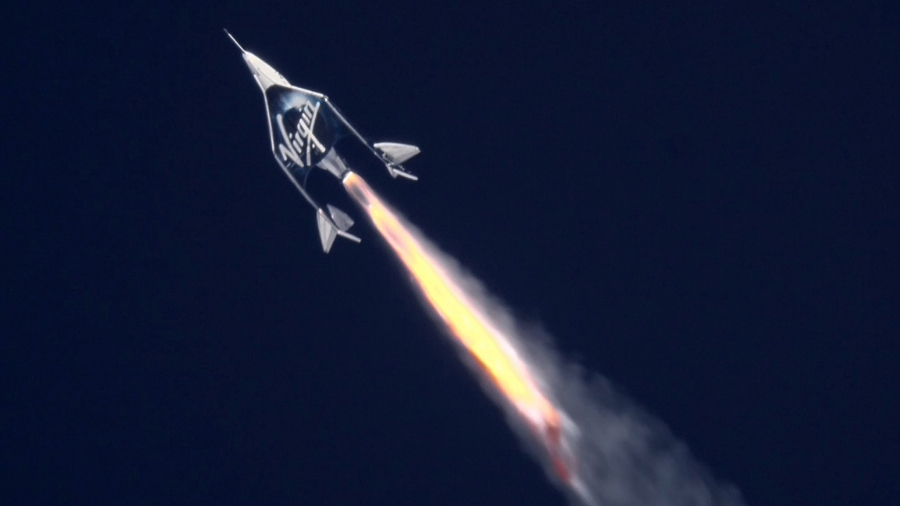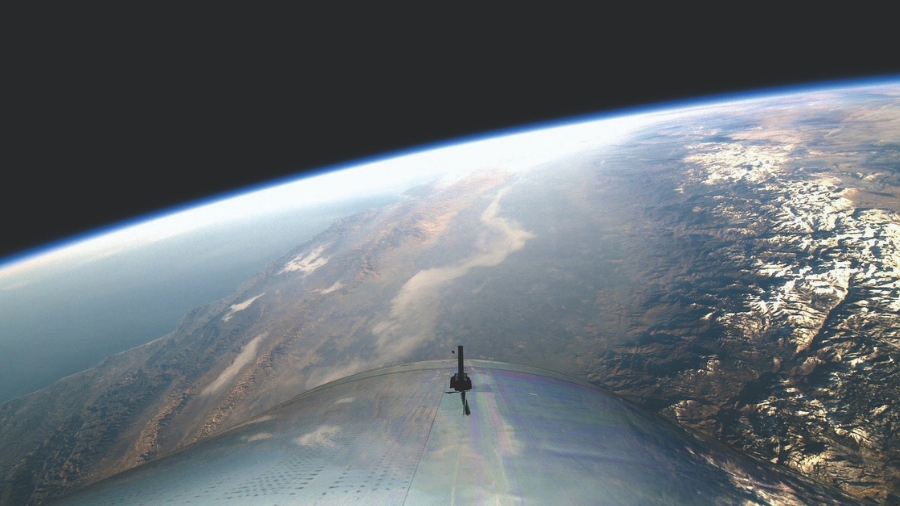Virgin Galactic: everything you need to know
The world’s first spaceliner?

Who needs an airline when you can have a spaceline? Aiming to become the first regular commercial spaceliner, Virgin Galactic founder Sir Richard Branson first promised to take people to space in 2004, and most years since has predicted that his ‘spaceliner of the future’ was on the cusp of beginning service.
However, impressive progress is being made and in December 2018, Virgin Galactic's VSS Unity supersonic spacecraft finally reached space. In February 2019, it went even higher. Next up: real, live, space tourism trips?

When will Virgin Galactic start space tourism and how much will it cost?
Branson says he expects to fly on the company’s SpaceShipTwo suborbital vehicle in 2019, possibly on July 16 to mark 2019's 50th anniversary of the Apollo 11 launch. About 600 'future astronauts' are signed up and have each put down a $20,000 (about £15,000, AU$30,000) deposit, though the final cost of tickets is $250,000 (about £190,000, AU$360,000).

Who owns Virgin Galactic and where is it based?
Virgin Galactic is part of the Virgin Group, which is owned by British billionaire entrepreneur Sir Richard Branson. The Virgin Group also includes the likes of Virgin Atlantic, Virgin Holidays, Virgin Radio, Virgin Rail, Virgin Money and Virgin Mobile, as well as Virgin Hyperloop One, which is trying to build an ultra-high-speed ‘people pipeline’.
Virgin Galactic has two sister companies, Virgin Orbit (which launches small satellites from a Boeing 747) and The SpaceShip Company, which builds and tests the VSS Unity. A major investor in all three was supposed to be Saudi Arabia at US$1 billion, but that was cancelled by Branson after the murder of Washington Post journalist Jamal Khashoggi at the Saudi consulate in Istanbul, Turkey in October 2018.
Virgin Galactic is, for now, based at the Spaceport America Mojave Air & Space Port in Mojave, California, but plans to move soon to Spaceport America in New Mexico.

What are Virgin Galactic's long-term goals?
An incredibly ambitious man and expert self-publicist, Branson is less gung-ho about space than Elon Musk at SpaceX and Jeff Bezos at Blue Origin.
Sign up for breaking news, reviews, opinion, top tech deals, and more.
"Your lives will be transformed by space," he wrote in a video-letter to his grandchildren after SpaceShipTwo made it to space for the first time in December 2018. "It will give your generation the planetary perspective on which the future of humanity rests, that we're all in this together on spaceship Earth."
Branson believes that as many people as possible need to see the curvature of the Earth from space to get a taste of the powerful 'overview effect' that many astronauts report feeling after coming back from space. If we all see Earth from space, we are all soon realise how irrelevant national boundaries and cultural differences are.
That's a pretty different perspective to that of Musk and Bezos, who both want to go much further than the edge of the Earth's atmosphere.
Branson is all, and pretty much only, about suborbital space tourism. Yes, it costs $250,000 (about £190,000, AU$360,000) for now, but the aim is to get the price drastically down in the future.

Virgin Galactic's VSS Unity supersonic suborbital spaceplane
Virgin Galactic is very serious about space tourism. Its VSS Unity spaceplane is a supersonic vehicle designed and built by sister company The Spaceship Company. It's based on Scaled Composites' SpaceShipOne, the first manned private rocket to reach space, in 2004 (VSS Unity and its forbear VSS Enterprise were formerly called SpaceShipTwo).
It has two seats for the pilots and six for passengers, but how it gets to space is unusual. It gets part of the way to space while attached to the undercarriage of a custom-made carrier aircraft called VMS Eve (formerly called WhiteKnightTwo) before it detaches and launches itself into space.
The Spaceship Company now has two more spaceships like VSS Unity for the start of commercial service, named VSS Etta and VSS Artie, but there is only one VMS Eve.

The test program so far
VSS Unity has successfully been to space twice. It first did so in December 2018 when pilots Mark Stucky and CJ Sturckow (plus some NASA payloads and a mannequin called Annie) reached 51.4 miles.
In February 2019 it reached space for the second time. It was VSS Unity's fifth rocket-powered flight test flight, and onboard this time were three people; pilots Dave Mackay and Michael Masucci, plus Beth Moses, Virgin Galactic’s Chief Astronaut Instructor.
'Astronaut wings' go to anyone who reaches 50 miles, though since the Kármán line at 62 miles up is generally accepted to be where space begins, that’s probably where Virgin Galactic is ultimately aiming to reach.
However, the test program hasn't been without problems. There have been two dramatic setbacks that have cost four lives, most recently co-pilot Michael Alsbury during an accident in October 2014.

What will Virgin Galactic space tourists experience?
Supersonic speeds, weightlessness, a view of the curvature of Earth, then more supersonic speeds. However, it's all pretty different from what Blue Origin is on the cusp of offering with its vertical take-off New Shepherd suborbital rocket. Six Virgin Galactic customers will arrive at Spaceport New Mexico four days before the scheduled flight for medical checks, safety training, and G-force and microgravity simulation (which may involve virtual and augmented reality).

The trip to space and back
On the fourth day, after getting strapped into their reclining seats in VSS Unity, the mothership VMS Eve will take-off on a runway and climb to 50,000 feet Now comes the fun bit; VSS Unity detaches and fires its rocket-powered engines for 63 seconds, surging towards space at three-and-a-half times the speed of sound.
That in itself will be an incredible experience for any ‘space tourist’, but it's also followed by four minutes of weightlessness, and a chance to see the Earth from space, before a descent at three times the speed of sound. That will be some rush. Finally, the VSS Unity will land back on the runway at Spaceport New Mexico, 1.5-2 hours after it took off.
A four-day commitment and a 2.5-hour ride make Virgin Galactic's space tourism experience far longer than the 11 minutes Blue Origin could soon offer. Is Virgin Galactic worth the $250,000? It looks like a bargain to us.
- Blue Origin: everything you need to know

Jamie is a freelance tech, travel and space journalist based in the UK. He’s been writing regularly for Techradar since it was launched in 2008 and also writes regularly for Forbes, The Telegraph, the South China Morning Post, Sky & Telescope and the Sky At Night magazine as well as other Future titles T3, Digital Camera World, All About Space and Space.com. He also edits two of his own websites, TravGear.com and WhenIsTheNextEclipse.com that reflect his obsession with travel gear and solar eclipse travel. He is the author of A Stargazing Program For Beginners (Springer, 2015),